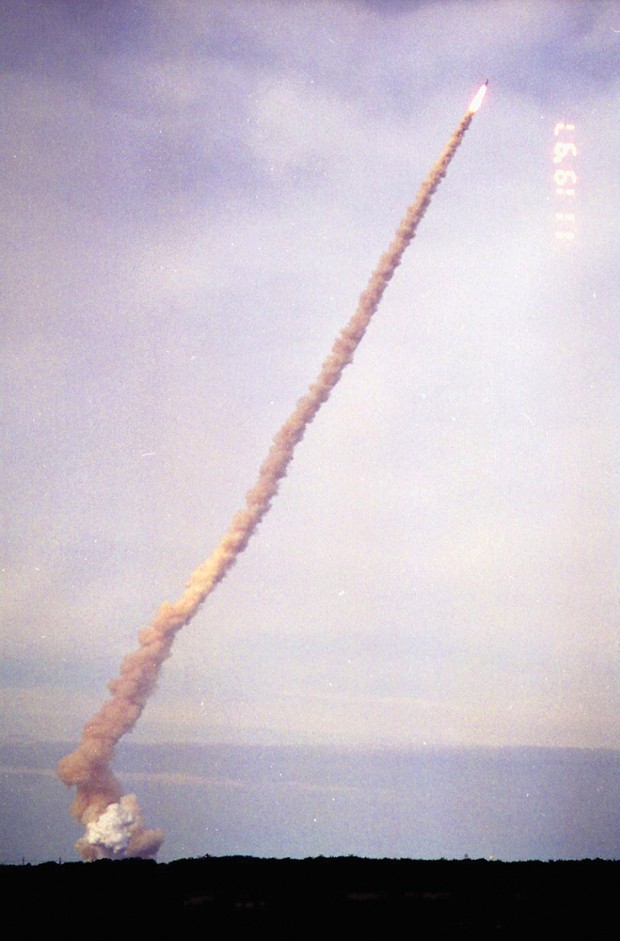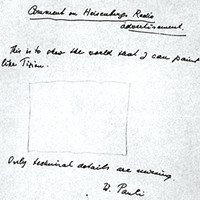
Space Shuttle Columbia, Nov. 19, 1997, launch from complex 39B, Kennedy Space Center, aka Cape Canaveral. Four launches later, Feb. 1, 2003, Columbia disintegrated during reentry, killing all seven crewmembers.
[
{
"name": "Top Stories Video Pair",
"insertPoint": "7",
"component": "17087298",
"parentWrapperClass": "fdn-ads-inline-content-block",
"requiredCountToDisplay": "1"
}
]
If you've ever watched the launch of a rocket, perhaps a Space Shuttle or one of SpaceX's Falcon 9s, you'll have heard the phrase "Max Q." About a minute after launch — one minute 22 seconds, in the case of Falcon 9 — the announcer will say something like, "The spacecraft is now experiencing its greatest stress at Max Q." and, soon after, "Engineers are now breathing a sigh of relief as the craft has passed Max Q."
Q stands for "dynamic pressure," first explored in the 1730s by Daniel Bernoulli of the high-achieving Swiss Bernoulli family. In a car, it's the drag. For a rocket, it's the air pressure resisting the forward motion of the craft. Bernoulli figured out that the drag, or resistance against motion, was proportional to the square of the velocity, v, so a car traveling at 60 mph experiences four times the drag experienced at 30 mph. It's also proportional to the density, r of air (or water, or any fluid) through which the car, airplane or rocket is moving. Bear with me for just this one equation: Q = ½ rv2
Before launch, the air pressure on a rocket is at its maximum (decreasing as you ascend), while its velocity is zero, so Q, the dynamic pressure on its hull, is also zero. It's also zero in orbit above the atmosphere, where r = 0. It's the period between launch and orbit that's the tricky part if you happen to be a rocket designer.
After launch, the velocity increases while the air density decreases. Before reaching Max Q, the dynamic pressure on the hull increases because the rise in the velocity-squared component is greater than that due to the decreasing air density. After passing Max Q, the opposite is true: As the craft gains altitude, the dynamic pressure due to decreasing air density is more significant than that due to the increasing velocity. So Max Q is the crossover point: Before, air density rules; after, velocity rules. For the Falcon 9, Max Q is reached at about 8 miles altitude, when it's traveling at a bit over 1 mile per second,
Rocket engineers could, of course, simply build their spacecraft strong enough to handle the stresses on the hull at Max Q, but that would run counter to the No. 1 rule, "Keep everything as light as possible." (The heavier the rocket, the more fuel is required, which makes it heavier, so more fuel, etc. For the Space Shuttle, fuel accounted for 95 percent of the launch weight.) Most of the hull of a Falcon 9 consists of an alloy of aluminum and lithium rather than, say, titanium — a stronger but heavier metal. To compensate for this lesser strength, the engines are throttled back as the rocket approaches Max Q, reducing the velocity by about 30 percent, essentially delaying Max Q until the craft is higher and the air density considerably less than it otherwise would have been. After Max Q, the engines revert to their maximum thrust.
While liquid fuel engines, such as those on the Falcon 9 and the three main engines of the Space Shuttle, can be readily throttled up and down, the twin solid-fuel booster rockets on the sides of the Space Shuttle's fuel tank had no such ability. Like Roman candles, once ignited, they burned until all their fuel was exhausted. To keep stresses on the hull to a safe level, the grains of the propellant were designed to burn with variable thrust at different times. About 50 seconds after launch, just before the main engines were throttled back, the thrust of the solid rocket boosters automatically decreased by about a third.
And yes, that is rocket science.
Barry Evans ([email protected]) is happy that the private sector is leading the new space enterprise, rather than keeping it under government control.
Speaking of...
-

Don't Shoot the Physicist!
Oct 21, 2021 - More »
more from the author
-
Doubting Shakespeare, Part 1: Stratfordians vs. anti-Stratfordians
- Apr 25, 2024
-
A Brief History of Dildos
- Apr 11, 2024
-
Eclipse!
- Mar 28, 2024
- More »
Latest in Field Notes
Readers also liked…
-
Trouble on the Line: The Reality Part 2
- Nov 3, 2022
































